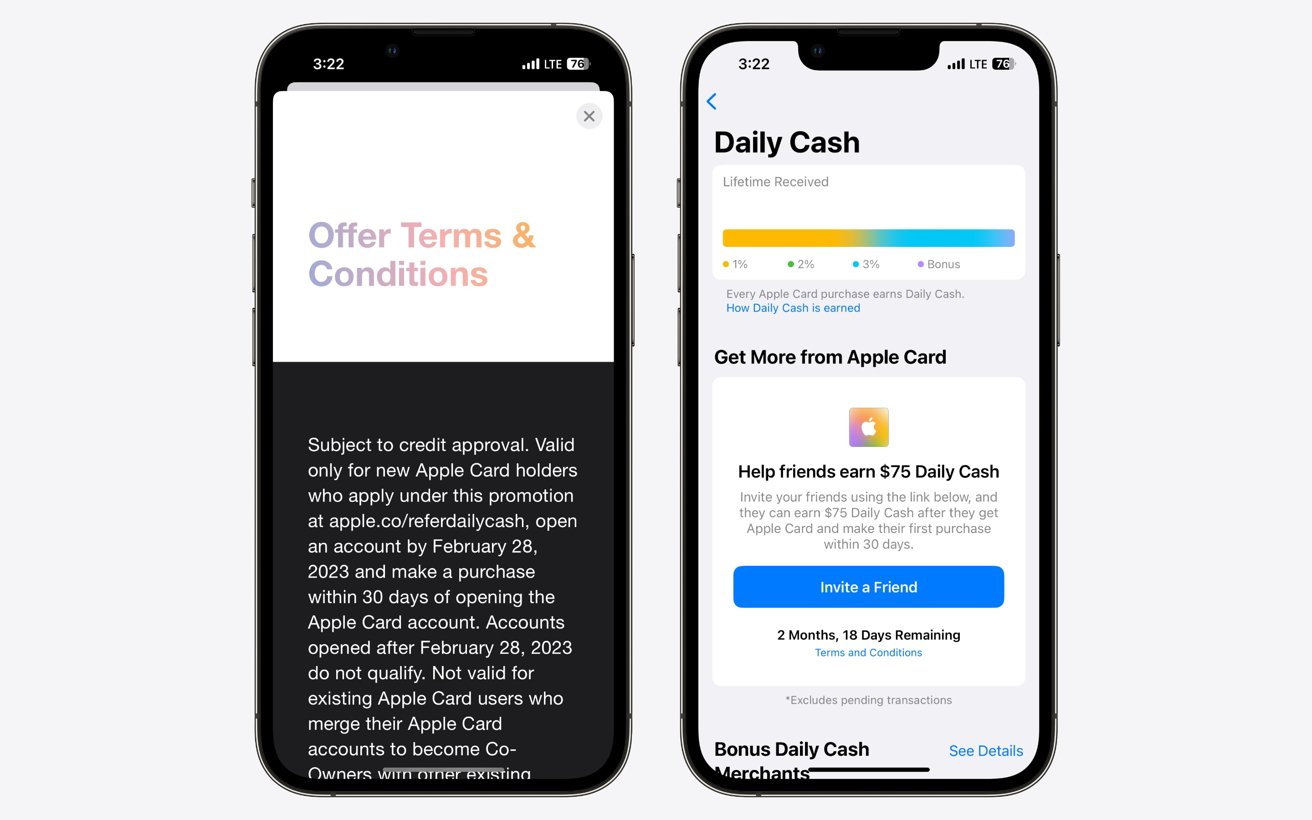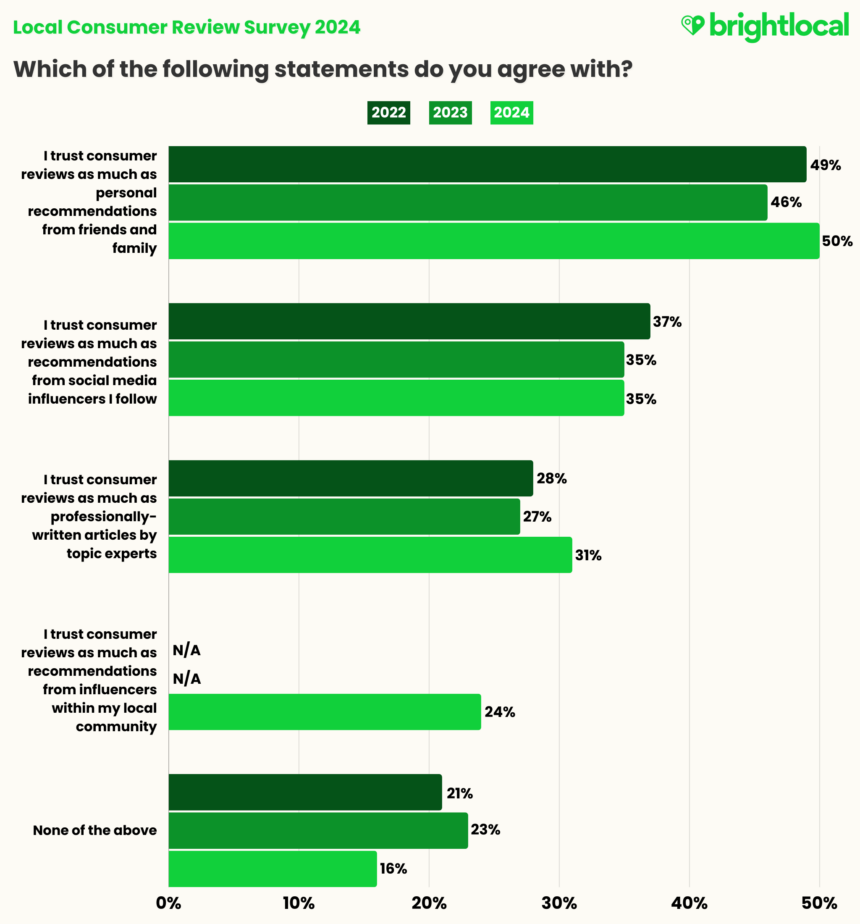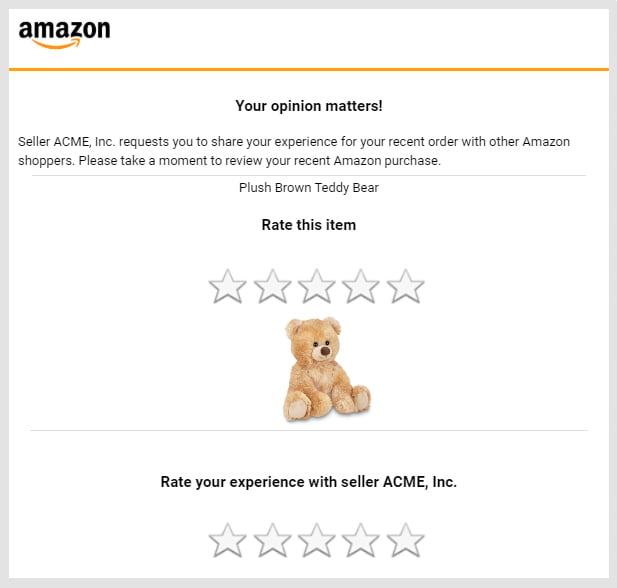
The Power of Word-of-Mouth Marketing: How to Leverage It for Your Business
For businesses, leveraging word-of-mouth marketing can lead to increased brand awareness, customer loyalty, and higher conversion rates. In this guide we tell you exactly how you can leverage this cost-effective strategy that can produce remarkable results!
Word-of-mouth marketing, often regarded as one of the most powerful forms of marketing, involves consumers sharing information about a product or service with their peers. This can happen naturally, through casual conversation, or be prompted by businesses through various strategies. The underlying strength of word-of-mouth marketing lies in its ability to generate trust and credibility.
When a customer recommends a product or service, it carries more weight than traditional advertising because it comes from a trusted source. This organic form of marketing can significantly impact business growth by reaching new customers who are more likely to trust the recommendation and make a purchase. Studies have shown that consumers are more likely to buy a product if it is recommended by a friend or family member.
For businesses, leveraging word-of-mouth marketing can lead to increased brand awareness, customer loyalty, and higher conversion rates. It is a cost-effective strategy that can produce remarkable results, especially when supported by excellent customer service and quality products. By harnessing the power of word-of-mouth marketing, businesses can create a ripple effect, turning satisfied customers into brand advocates who help spread the word about their offerings.
Now that the importance of word-of-mouth marketing is clear, let's explore the specific strategies your business can use to leverage this powerful tool.
2. The Power of Word-of-Mouth Marketing
Word-of-mouth marketing offers numerous benefits that can significantly enhance your business's growth and reputation. By understanding and leveraging these advantages, your brand can create a powerful and sustainable marketing strategy.
Trust and Credibility
One of the most compelling benefits of word-of-mouth marketing is the trust and credibility it generates. When a customer shares their positive experience with your product or service, it carries an authenticity that traditional advertising often lacks. Consumers tend to trust recommendations from friends, family, and even acquaintances more than they trust paid advertisements. This trust stems from the perception that personal recommendations are unbiased and stem from genuine satisfaction.
Ninety-two percent of consumers around the world say they trust earned media, such as word-of-mouth or recommendations from friends and family, above all other forms of advertising
In an era where consumers are increasingly skeptical of advertising, word-of-mouth marketing can cut through the noise. A recommendation from a trusted source can significantly influence purchasing decisions, leading to higher conversion rates and fostering long-term customer loyalty. By consistently delivering exceptional products and services, your business can build a loyal customer base that advocates for your brand, creating a cycle of trust and credibility.
Cost-Effectiveness
Word-of-mouth marketing is inherently cost-effective, making it an attractive strategy for businesses of all sizes. Unlike traditional marketing channels, which often require substantial financial investment, word-of-mouth relies on organic customer interactions. The cost of acquiring a new customer through word-of-mouth can be significantly lower than through paid advertising, as it leverages the existing customer base to spread the word.
Furthermore, word-of-mouth marketing can have a compounding effect. Satisfied customers who share their positive experiences can influence multiple potential customers, who may then become advocates themselves. This organic growth can lead to a broader reach and higher returns on investment without the continuous financial outlay associated with other marketing strategies.
Viral Potential
The viral potential of word-of-mouth marketing is another significant advantage. In today's digital age, information can spread rapidly through social media, online reviews, and community forums. A single positive recommendation can quickly reach a large audience, especially if it is shared by influential individuals or within engaged communities.
For example, a compelling testimonial or review posted on social media can be shared and reshared, reaching exponentially more people with each interaction. This viral potential can amplify your brand's visibility and create widespread awareness in a relatively short period. By encouraging and facilitating easy sharing of customer experiences, your business can harness this viral potential to boost its reach and influence.
Additionally, the viral nature of word-of-mouth marketing means that a positive reputation can grow exponentially. As more people share their experiences, your brand becomes more recognizable and trusted within your industry. This can lead to a self-perpetuating cycle of growth, where each new customer has the potential to bring in more through their recommendations.
By focusing on these key benefits—trust and credibility, cost-effectiveness, and viral potential—your business can effectively leverage word-of-mouth marketing to achieve substantial growth and customer loyalty. In the next section, we will delve into specific strategies to maximize the impact of word-of-mouth marketing for your brand.
3. Strategies to Leverage Word-of-Mouth Marketing for Your Business
a. Create Exceptional Customer Experiences
At the heart of word-of-mouth marketing lies the need to create exceptional customer experiences. When customers are delighted with your products or services, they are more likely to share their positive experiences with others, turning them into brand advocates. Here’s why providing excellent products and services is crucial:
- Customer Satisfaction: Satisfied customers are the foundation of word-of-mouth marketing. They are more likely to recommend your business to friends, family, and colleagues. Ensuring that every interaction a customer has with your brand is positive can lead to increased customer satisfaction and, consequently, more word-of-mouth referrals.
- Brand Loyalty: Exceptional customer experiences foster brand loyalty. Loyal customers are not only repeat buyers but also enthusiastic promoters of your brand. They are more likely to share their positive experiences and recommend your products or services to others, further enhancing your word-of-mouth marketing efforts.
- Differentiation: In a competitive market, providing outstanding products and services can set your business apart. Customers often remember and talk about businesses that go above and beyond their expectations. This differentiation can create a lasting impression and generate buzz around your brand.
Real World Example: Apple
Apple is a prime example of a company that has mastered the art of creating exceptional customer experiences. Known for its innovative products and top-notch customer service, Apple has built a loyal customer base that actively promotes its brand.
- Innovative Products: Apple consistently introduces cutting-edge products that not only meet but often exceed customer expectations. From the iPhone to the MacBook, Apple’s products are designed with a focus on quality, usability, and innovation. This commitment to excellence ensures that customers are not just satisfied but delighted with their purchases.
- Customer Service: Apple’s customer service is renowned for its excellence. Whether through the Genius Bar in Apple Stores or its online support, Apple ensures that customers receive timely and effective assistance. This level of service creates a positive customer experience that customers are eager to share with others.
According to the American Customer Satisfaction Index (ACSI) report from 2022, Apple led the personal computer category with a score of 82 out of 100.
- Brand Loyalty: Apple’s dedication to creating exceptional experiences has fostered a community of loyal customers who are passionate about the brand. These customers often act as brand ambassadors, recommending Apple products to their networks and contributing to the company’s word-of-mouth marketing success.
Apple's Referral Program - Apple Card
Apple’s referral program for Apple Card is a strategic initiative designed to leverage word-of-mouth marketing by incentivizing existing users to refer new customers. Here’s a detailed look at how this program works and its impact:
Launch and Purpose: Apple introduced the Apple Card referral program to encourage its existing user base to spread the word about the benefits of the Apple Card. By doing so, Apple aims to increase the adoption rate of the Apple Card through trusted recommendations, which are more likely to influence potential customers.
Incentives for Referrals: The referral program offers various incentives to existing Apple Card holders who successfully refer new customers. These incentives can include:
- Cashback Bonuses: Referring users and new customers may receive additional cashback on their purchases.
- Exclusive Offers: Special promotions or discounts on Apple products and services.
- Bonus Rewards: Additional rewards points that can be used for purchases or redeemed for other benefits.

Implementation and Success
Ease of Use: The referral process is designed to be straightforward. Existing Apple Card users receive a unique referral link that they can share with friends and family via email, social media, or messaging apps. This seamless sharing process makes it easy for users to participate in the program.
Promotion and Awareness: Apple promotes the referral program through various channels, including the Wallet app, Apple’s website, and email marketing campaigns. By raising awareness of the program, Apple ensures that its customers are informed and motivated to take part.
Tracking and Rewards: The referral program is integrated within the Apple ecosystem, allowing for easy tracking of referrals and rewards. Users can see the status of their referrals and any earned bonuses directly within the Wallet app, providing a transparent and user-friendly experience.
By following Apple’s example and focusing on delivering exceptional customer experiences, your business can build a loyal customer base that actively promotes your brand. This strategy not only enhances word-of-mouth marketing but also drives long-term growth and success.
b. Encourage Customer Reviews and Testimonials
Encouraging customer reviews and testimonials is a powerful strategy to leverage word-of-mouth marketing. Positive reviews can significantly influence potential customers by providing social proof and building credibility for your products or services. Here’s how and why customer reviews matter, with a focus on Amazon’s success in this area.
Impact of Positive Reviews
i. Building Trust and Credibility: Customer reviews are perceived as genuine and unbiased opinions from real users. Potential customers trust these reviews because they come from individuals who have no vested interest in promoting the product. According to a 2020 BrightLocal survey, 87% of consumers read online reviews for local businesses, and 91% of consumers trust online reviews as much as personal recommendations .

ii. Influencing Purchase Decisions through Customer Reviews: Positive reviews can greatly influence buying decisions. When potential customers see high ratings and positive feedback, they are more likely to perceive the product or service as reliable and worth their investment. According to the latest report by Brightlocal "The percentage of consumers who said they trust reviews as much as recommendations from family and friends has increased by 4% (in 2024) since 2023. It’s a significant finding, showing that half of consumers feel online reviews carry as much sway as personal recommendations."

A study by Spiegel Research Center found that the likelihood of a product being purchased increases by 270% when it has five or more reviews .
As products begin displaying reviews, conversion rates escalate rapidly. The purchase likelihood for a product with five reviews is 270% greater than the purchase likelihood of a product with no reviews. But having more reviews isn’t necessarily better, after a point. The marginal benefit of additional reviews begins diminishing rapidly after the first five reviews.

Example: Amazon
Amazon is a prime example of a company that effectively encourages customer reviews, boosting product credibility and driving sales. Here’s how Amazon does it:
i. Review Encouragement: Amazon actively encourages its customers to leave reviews. After a purchase, Amazon sends follow-up emails prompting customers to share their feedback. This proactive approach increases the number of reviews and ensures a steady flow of fresh content.

ii. Verified Purchase Badge: Amazon uses a “Verified Purchase” badge to indicate reviews from customers who have actually purchased the product. This feature helps potential buyers trust the authenticity of the reviews, as they know the feedback is from genuine customers.
iii. Helpful Votes: Amazon allows users to vote on whether a review was helpful or not. Reviews with the most helpful votes are displayed prominently, making it easier for potential customers to find insightful and reliable feedback. This system enhances the credibility of the reviews shown at the top.
iv. Reviewer Rankings: Amazon ranks its reviewers, highlighting top contributors who consistently provide detailed and helpful reviews. This ranking system incentivizes reviewers to contribute more high-quality feedback, further enriching the review ecosystem.
c. Implement Referral Programs
Referral programs are a highly effective strategy for leveraging word-of-mouth marketing. By incentivizing existing customers to refer new ones, businesses can tap into the power of personal recommendations to drive growth. What's even better is if a business explores double-sided referrals as a strategy, the conversion and engagement rates hit higher. More about that as you read along -
Effectiveness of Referral Programs
- Increased Customer Acquisition: Referral programs can significantly boost customer acquisition by leveraging the existing customer base. When satisfied customers refer friends and family, the likelihood of conversion is higher because the recommendation comes from a trusted source.
In 2021, Ambassador got together with The Harris Poll Online to survey 2,000 Americans about referral marketing. (Source: getambassador.com) - Cost-Effective Marketing: Referral programs can be more cost-effective than traditional marketing methods. The cost of acquiring a new customer through referrals is often lower because it eliminates the need for extensive advertising campaigns. Instead, businesses can offer modest incentives to existing customers, which can lead to high returns on investment. One study of more than 10,000 customers over a 33-month period by the University of Pennsylvania’s Wharton School found that referred customers generated 25% higher profit margins and represented higher customer lifetime values (CLV) over customers acquired through other acquisition channels.
- Enhanced Customer Loyalty: Referral programs can also enhance customer loyalty. By rewarding existing customers for their referrals, businesses reinforce positive relationships and encourage ongoing engagement. Loyal customers who participate in referral programs are more likely to continue supporting the brand and making repeat purchases.
- Viral Growth Potential: Referral programs have the potential for viral growth. When existing customers share referral links with multiple people, the reach can expand exponentially. This viral effect can lead to a rapid increase in brand awareness and customer base.
Double-Sided Referrals
Double-sided referral programs are a particularly effective type of referral program where both the referrer and the referred customer receive incentives. This approach maximizes the appeal of the referral program by offering benefits to both parties involved. Here’s how double-sided referrals can further enhance the effectiveness of referral programs:
- Mutual Benefit: By providing incentives to both the referrer and the referred customer, double-sided referrals create a win-win situation. This mutual benefit can increase the likelihood of participation from both existing and new customers.
- Increased Participation: Potential customers are more likely to act on a referral if they too receive a reward. This increases the overall participation rate and can lead to higher conversion rates.
- Enhanced Trust: When new customers receive a benefit for joining through a referral, it reinforces the trust and credibility of the recommendation. This can further improve customer acquisition and loyalty.
Excited to launch a double-sided referral program for your brand? Well, it'll take you only a few clicks with rehook.ai.
With rehook.ai, you can launch referral rewards that attract new users, motivate your top advocates, and maximize conversions. All without losing time, money, and effort. Click here to Book A Demo
How will launching a referral program with rehook.ai superpower customer engagement for your brand?
- With Rehook.ai, you can run, track, and manage powerful user-promotions that deliver high-impact results.
- Launch high-performing referral campaigns that boost acquisition, encourage user engagement, and propel brand loyalty. All without any development effort. Get more users to connect and engage with your business.
- Accelerate Referrals with Inspiring Rewards: Run dual-sided referral programs with rewards that engage both existing and new users. Launch tiered campaigns with multiplying reward levels that keep the referrals coming. Tie rewards with any customer action you prefer, such as the first purchase or order value.
- Delight the right user with the right reward. Personalize rewards to maximize conversions and tailor every step of the referral journey!
- Create a finely-targeted referral program based on any unique-to-user attribute such as location, age, gender, and more.
- Build custom reward journeys in any way you like - whether it's discounts, coupons, platform currency, or third-party vouchers.
- Optimize every referral campaign's performance and spends with deep analytics and real-time tracking abilities.
Real World Example: Harry’s
Harry’s, a D2C shaving company, successfully implemented a referral program to drive growth. Here’s how Harry’s leveraged their referral program:
- Pre-Launch Campaign: Before officially launching, Harry’s created a referral program to generate buzz and build a customer base. They offered potential customers the chance to win free products and other rewards by referring friends to sign up for early access.
- Incentives for Referrals: Harry’s provided tiered incentives for referrals. Customers could earn rewards such as free shaving cream, razors, or even a year’s supply of razors based on the number of referrals they made. This tiered system motivated customers to refer more people to unlock better rewards.
- Ease of Participation: The referral program was designed to be simple and user-friendly. Customers received unique referral links that they could easily share via email, social media, or messaging apps. This ease of participation helped maximize the reach of the program.
- Tracking and Transparency: Harry’s ensured that participants could easily track their referral progress and see how many rewards they had earned. This transparency encouraged ongoing engagement and motivated customers to continue referring friends.
By implementing a well-designed referral program, your business can harness the power of word-of-mouth marketing to acquire new customers, increase loyalty, and drive sustainable growth. Following Harry’s example, offering attractive incentives and ensuring ease of participation can lead to a successful referral program that amplifies your brand’s reach.
d. Leverage Social Media and Online Communities
Social media and online communities play a crucial role in spreading word-of-mouth marketing. These platforms provide a space for customers to share their experiences, recommend products, and engage with brands in meaningful ways. By effectively leveraging social media and online communities, businesses can amplify their reach and build strong, loyal customer bases.
Role of Social Media in Spreading Word-of-Mouth
- Amplified Reach: Social media platforms like Facebook, Instagram, Twitter, and TikTok have billions of active users. A single positive post or review can be shared and reshared, reaching a vast audience quickly. This amplification effect can significantly boost brand awareness and attract new customers.
- Customer Engagement: Social media allows brands to interact directly with their customers. Responding to comments, sharing user-generated content, and engaging in conversations can build a sense of community and loyalty. Active engagement can also encourage more customers to share their positive experiences online.
- Influencer Partnerships: Collaborating with influencers who align with your brand can enhance word-of-mouth marketing. Influencers have dedicated followings who trust their opinions, and their endorsements can drive significant traffic and sales. Businesses who understand influencer marketing gain impressive returns: up to $18 in earned media value for every dollar spent on influencer marketing.
Example: Glossier
Glossier, a D2C beauty brand, is a prime example of how effectively leveraging social media and online communities can build a strong brand. Here’s how Glossier did it:
iii. Community Engagement: From its inception, Glossier focused on building a community around its brand. The company used social media to engage with customers, ask for product feedback, and create a sense of belonging. This community-driven approach helped Glossier build a loyal customer base.
ii. User-Generated Content: Glossier actively encourages customers to share their experiences and photos with its products on social media. The brand frequently reposts user-generated content on its own channels, showcasing real customers and their stories. This strategy not only provides authentic content but also makes customers feel valued and appreciated.
iii. Influencer Collaborations: Glossier has partnered with numerous influencers and beauty bloggers to promote its products. These collaborations have helped the brand reach wider audiences and gain credibility through trusted voices in the beauty community.
iv. Authenticity and Transparency: Glossier’s social media presence is known for its authenticity and transparency. The brand shares behind-the-scenes content, product development stories, and honest conversations about beauty. This approach resonates with customers who value genuine interactions over polished advertisements.
Conclusion
Word-of-mouth marketing is a powerful tool that can drive significant growth and success for your business. By understanding and leveraging its various strategies, you can create a strong and loyal customer base that actively promotes your brand. Here’s a summary of the key points:
- Create Exceptional Customer Experiences: Providing excellent products and services is crucial for generating positive word-of-mouth. Satisfied customers are more likely to share their experiences, building trust and credibility. Apple is a prime example of a company that excels in this area, consistently delivering innovative products and top-notch customer service.
- Encourage Customer Reviews and Testimonials: Positive reviews and testimonials can significantly influence potential customers by providing social proof. Amazon effectively encourages customer reviews, boosting product credibility and driving sales. Fresh user-generated content also enhances SEO, improving your brand's online visibility.
- Implement Referral Programs: Referral programs can significantly boost customer acquisition, enhance customer loyalty, and provide cost-effective marketing. Harry’s successful pre-launch referral campaign demonstrates the viral potential of well-designed referral programs. Double-sided referrals, which reward both the referrer and the referred, can further enhance participation and trust.
- Leverage Social Media and Online Communities: Social media platforms amplify the reach of word-of-mouth marketing. By engaging with customers, encouraging user-generated content, and collaborating with influencers, brands can build strong online communities. Glossier's community-driven approach on social media showcases the effectiveness of this strategy.
- Partner with Influencers and Brand Advocates: Collaborating with influencers and brand advocates can expand your reach, build credibility, and drive engagement. Nike’s partnerships with athletes and influencers highlight the impact of strategic collaborations in promoting products and fostering brand loyalty. Influencer marketing has proven to be highly effective, with significant returns on investment.
By incorporating these strategies into your marketing plan, your business can harness the power of word-of-mouth marketing to achieve sustainable growth and success.
P.S: At rehook.ai, we're extremely passionate about the world of marketing, user-promotions and it's impact on customer engagement, loyalty and conversions. Our blog is regularly updated with exciting strategies, trends and the latest news that you can leverage to produce high-impact results for your business! Click here for more such in-depth guides, blogs and articles!
